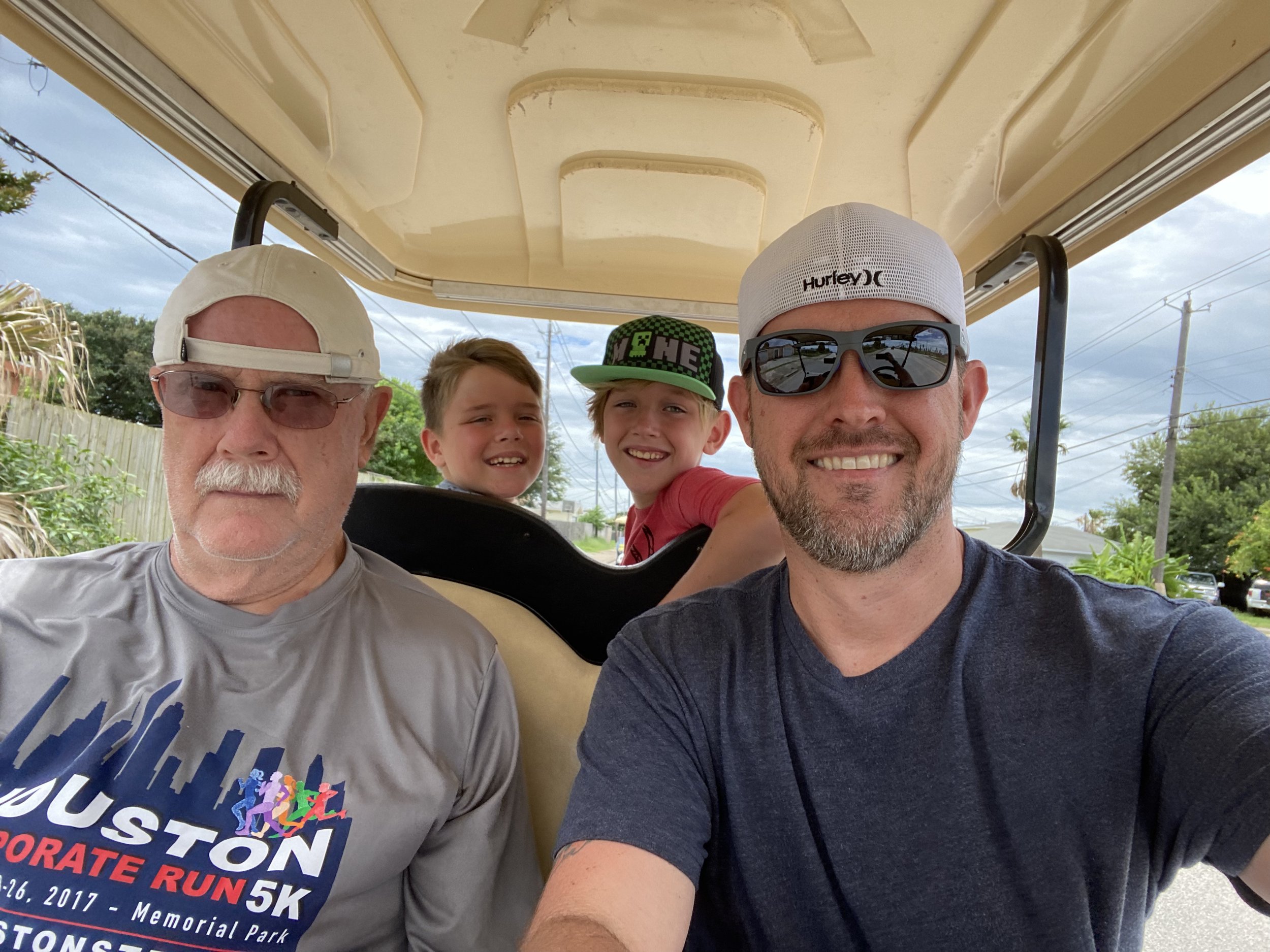Why we’re designing for minds that need less noise
Brant’s repeat encounters with dementia and traumatic brain injury
I didn’t always know this work would find me.
When I was a kid, I remember visiting my stepmother’s grandma. She had Alzheimer’s, and as far back as I can recall, she sat silently in a wheelchair, staring into the distance. I was too young to understand what I was seeing. No one really explained it in a way a child could grasp. All I knew was that something about it scared me. It felt like watching someone disappear while still sitting right there.
Brant poses with his Grandmama on a Christmastime visit to South Carolina, while she was still living at home.
Years later, in college, I needed a job that worked around my course load. By chance, in the small Hill Country town where I was, there happened to be one of the nation’s first post-acute brain injury rehab centers. I landed a job at one of their residential facilities with residents ranging in age from 13 to 60. One of them, a young man not much older than me, had been in a bad car accident. He could have easily been a close friend in another timeline. Working there reframed the way I saw cognitive challenges, and made me aware of all the mental tasks we take for granted every day.
That experience changed me.
Near the end of college, while I was still working at the rehab center, my Dad’s mother developed dementia. This time, things felt different. I wasn’t afraid. I was curious, compassionate, and calm. There was a strange sense of familiarity—like I could finally meet this situation with understanding instead of confusion. And it didn’t stop there.
Over the next 10–15 years, other people I loved began experiencing cognitive decline. My stepmother’s mom. My Mom’s mom. And then, it got closer.
My father-in-law.
Brant and Erin laughing at Erin’s dad gives a speech at their wedding in 2008, before he was diagnosed.
It started with small things, but slowly and painfully, the signs became clearer. It took years—years of visits to specialists and frustration and searching—before the diagnosis came: early-onset Alzheimer’s, tied to a rare familial gene.
This particular gene is so predictive that nearly everyone who has it develops the disease. It’s the kind of gene that, once identified, makes the rest of your family tree feel like a waiting game. And those who carry it? They have a 50% chance of passing it on.
My wife has the gene. And she has a super cool younger sister (our business partner, btw)!
We have two amazing boys. And they have 2 adorably cute younger cousins!
Brant drives his father-in-law and sons in a Golf Cart during a family beach trip.
When we first learned about the nature of this gene, we were determined to get out ahead of it. We dove headfirst into research and planning, trying to understand what this meant for our future, and especially for our sons. And that’s when we realized just how hard it is to find reliable, understandable information.
The deeper we looked, the more frustrating it became. So much of it was buried, clinical, or disconnected. That experience only strengthened our belief that the work we do—making digital experiences easier to understand and navigate—isn’t just helpful. It’s essential.
Suddenly, this story that started in childhood isn’t a distant memory or a chapter I can close. It’s ours. It’s now. It’s what we’re living and what we’re preparing for—every single day. And it’s made something very clear to me:
This isn’t just my recurring experience. It's everyone’s story in some form.
Go anywhere—a grocery store, a baseball game, your favorite pancake spot in South Lake Tahoe—and odds are, you’ll find someone who’s lived this too. Someone who’s cared for a parent. Sat in doctor’s offices. Read through articles trying to make sense of it all. Held the weight of uncertainty and asked, “Why us?”
That’s why Slide UX is shifting focus. Clarifying our purpose.
We’re not here to help build tech for tech’s sake. We’re here to reduce cognitive load. To build with clarity, simplicity, and purpose. To design for minds that need a little less noise—whether it’s the person navigating cognitive changes or the caregiver standing beside them.
Unbeknownst to me, early in my career, I was already gravitating in this direction. I started out in visual communication and graphic design, but I quickly narrowed my focus to advocating for users and what they need from digital experiences. I’ve always cared more about how people actually interact with what we create—how it feels, what helps them move forward, and what gets in the way.
But after 20 years of doing the work, I had started to feel burned out. At first, I thought I’d just hit a wall—maybe I’d outgrown the industry, or aged out of being excited by the next shiny new tech trend. Maybe I had reached the top of what I had to offer. But as soon as Erin started the conversation about shifting our agency’s purpose toward cognitive impairment, it hit me: my passion for this work had never gone away. I just lost track of it for a bit.
This isn’t about us. It’s not about brand positioning or market share. It’s about doing something good with the tools we’ve spent years building. We know how to make digital experiences simpler. And now, more than ever, we need to.
Because the world is only getting noisier.
And someone needs to design for the quiet.




